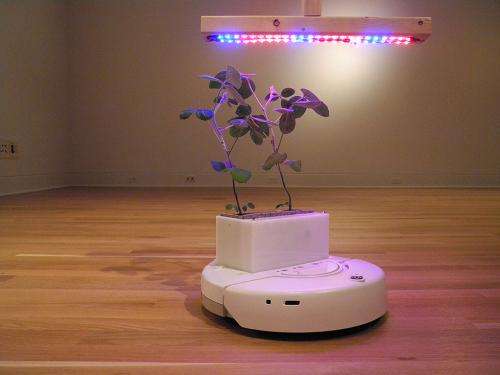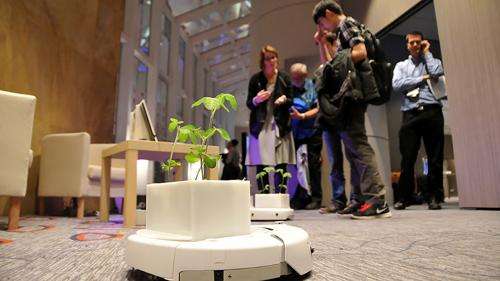Professors from Purdue University's electronic and time-based art program designed a robotic platform allowing indoor plants to search for light to sustain nourishment. These mobile micro-gardens are called Soybots.
Purdue University professors designed a robotic platform allowing indoor plants to search for light to sustain nourishment.
"Soybots: Mobile Micro-Gardens is a responsive robotic-botanic hybrid artwork that utilizes light sensors to track sunlight intensity or to locate LED grow lights," said Shannon McMullen, an assistant professor of electronic and time-based art. "We chose soybean plants because they are a key global food source, and part of producing art is to raise questions about the future of robotics in agriculture and how humans exist in this relationship."
Soybots were created by McMullen and Fabian Winkler, an associate professor of electronic and time-based art. In electronic and time-based art, artists use new media technologies, such as computers and robotics, while emphasizing the time-based component. This form of contemporary art changes over time through some type of interaction, either in response to people or naturally over a set time period.
As each soybot moves, the robot transmits both sensor data and positional coordinates to a visualization window in its gallery space.
"The robots' movements as related to light sources are tracked as part of the exhibit, and by making this interface visible to visitors it inspires discussion about energy need, consumption and balance - comparing forms of sun and electrical energy," Winkler said.
Next, the soybots will be on exhibit in March for the "Balance/Unbalance: Water, Climate and Place. Reimagining Environments" exhibit at Arizona State University. Purdue's electronic and time-based art program is housed in the Patti and Rusty Rueff School of Visual and Performing Arts
As each soybot moves, the robot transmits both sensor data and positional coordinates to a visualization window in its gallery space. This project combines art and agriculture, and that is why soybean plants were selected for this project.
More information: www.gardensandmachines.com/SoyBots/index.html
Provided by Purdue University























